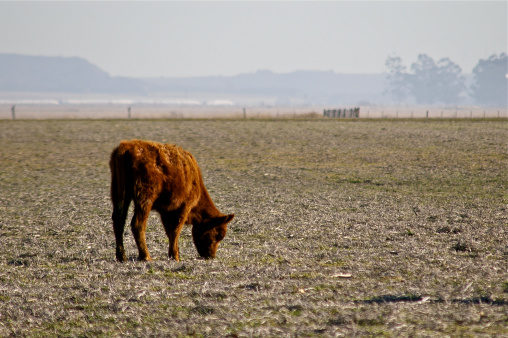As the several year-old drought in California wears on with no end in sight, the state’s agriculture industry is scrambling for answers. Perhaps the hardest hit sector is organic dairy, where regulations make it harder to maintain business as usual through a severe lack of rainfall.
California is the nation’s dairy leader, accounting for over 20% of total production last year. According to the latest data from the California Department of Food and Agriculture, total milk production in California fell 1.3% in 2013, and perhaps more alarmingly, the total number of dairies in operation decreased by 4.3%. Dairy cows need large amounts of feed to produce milk, and feed prices have spiked as supply has shrunk over the course of the drought. According to Jennifer Bice, CEO of Redwood Hill Farm and Creamery, cows also require 30–50 gallons of fresh water per day. Bice says that goat dairy farms, like that owned by her company, require much less water.
The situation is worse for organic dairies, which are required to graze their cows on pasture at least 120 days per year in order to maintain their organic status. Pasture grasses have been devastated by the drought, and farmers have needed to wait weeks longer than usual for enough viable pasture to grow.
Bice says her company has 350 goats on its farm, and also sources cow milk from a nearby family-owned organic farm, which it sells under the brand name Green Valley Organics. “Because of this drought, our cow dairy, which is also in Sonoma County, lost two to three months worth of pasture earlier this year,” she says.
The U.S. Department of Agriculture (USDA) stepped in to relieve some of the pressure in February by issuing a temporary variance that reduces the number of required pasture days for organic dairy cows. Farmers are resorting to trucking in water for irrigation and must buy feed at steep prices to stay in business. One fear is that some organic dairies may choose to let their organic status lapse and switch to conventional dairy to lessen the burden.
Some farmers have taken steps to mitigate the damage. “With our goat dairy, we live in a water short area, and so we’ve always taken measures to preserve water in our farm,” says Bice. Her farm has added more water storage capability and reuses water for certain tasks. Some regions can rely on well water, and farmers also plan ahead by storing feed in silage for future use. But eventually the drought will catch up to everybody. “Really the main solution is more rain. We need to do some rain dances,” says Bice.
Bice says that an uptick in dairy prices should be expected nationwide in 2015, as the difficult conditions continue in California. The National Oceanic and Atmospheric Administration recently released its winter forecast, and said in a statement, “While drought may improve in some portions of the U.S. this winter, California’s record-setting drought will likely persist or intensify in large parts of the state.”
Published in WholeFoods Magazine, December 2014(online 11/14/2014)










